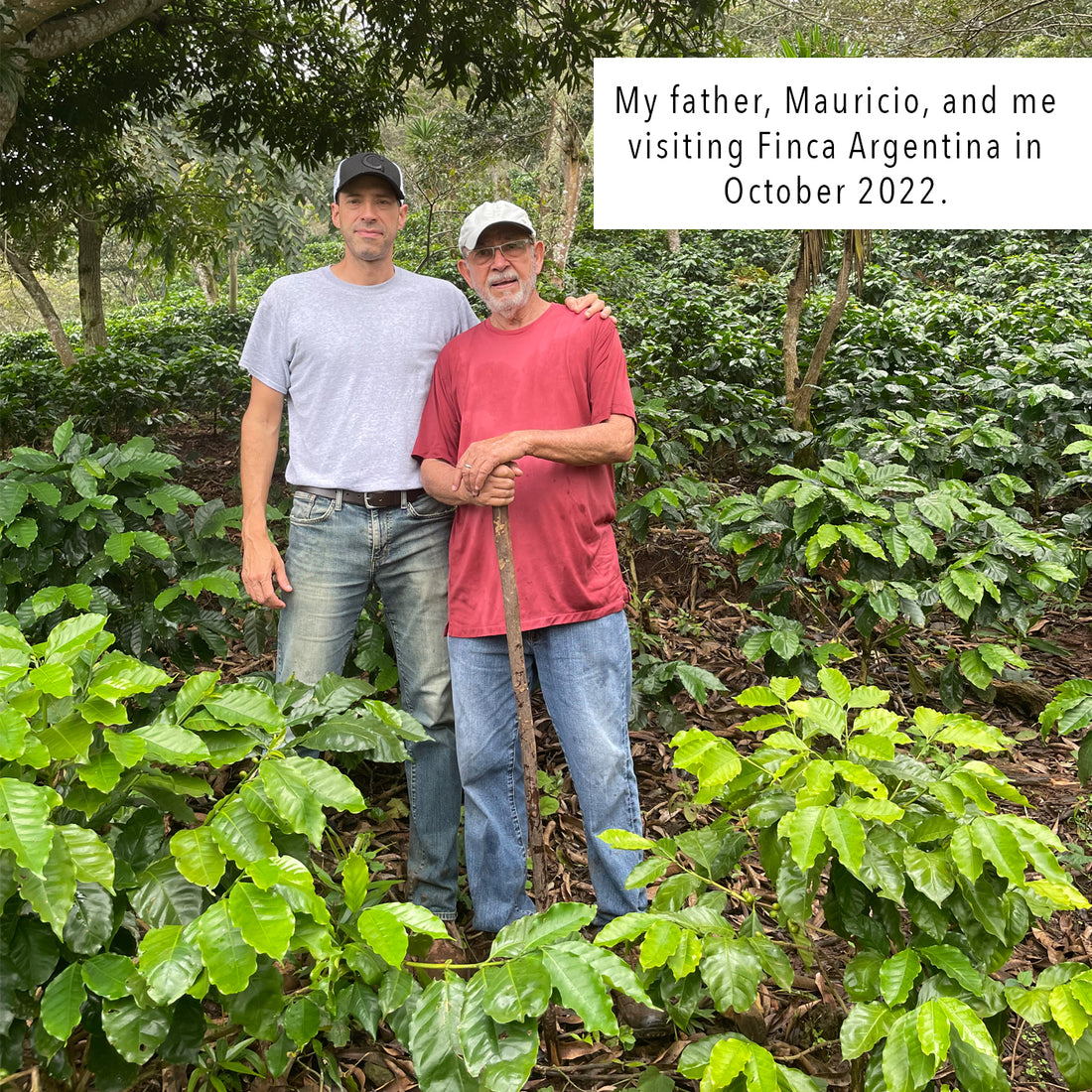
Our Farm & the Pacamara Bean.
Share

Before I was born, our grandfather bought a property on the slopes of the Apaneca-Llamatepec mountain range in the western region of El Salvador, close to the border with Guatemala and in the coffee-growing region of the country. The farm, called Finca Argentina, was passed down to our father, who still runs it today. It covers 100 acres at an average elevation of 1,200 meters above sea level.
During my time in El Salvador, I actively managed the farm with my father. We implemented several farming best practices that are still in place today, including the use of compost and organic foliar sprays made from locally sourced materials such as coffee pulp, chicken manure, rice bran, rock dust, ground charcoal, local soil microorganisms, and molasses. We use around 4 tons of compost each year, and I would like to use even more if possible.
We employ a permanent staff of 25 to 30 people and, during the harvest season, this number increases to around 75. In 2013, we began a major renovation of the plantation, which is still ongoing (we have only 12 acres left to replant). We have also diversified our plant stock significantly, which now includes the Pacamara variety of the Arabica family among others.
So what are Pacamara beans? Let's start by saying that not all Arabica coffee is the same. There are several varieties or cultivars in existence which are mainly natural mutations of heirloom varieties. Two such mutations are the parents of the Pacamara bean.
The name Pacamara comes from combining the name of the parents' variety (Pacas and Mara). Pacas variety, a dwarf mutation of the high-yielding Bourbon type, was found in a farm in El Salvador owned by the Pacas family, hence its name. The other parent variety is the Maragogype, which comes from Typica variety that produces large beans and grows very tall. 
I decided to plant this variety in 2014 after noticing the quality of the cup produced by Pacamaras from neighbouring farms. I managed to obtain some seeds of the red variety, and through some connections, I was lucky to obtain seeds of the rare yellow variety from Nicaragua as well. I selected a special 6-acre lot on the highest part of the farm, ranging from 1,250 to 1,350 meters above sea level, to plant the Pacamara. After three years of finding and sprouting the seeds, we planted the lot in 2017 with one-half of the area of red Pacamara beans and the other half with yellow Pacamara. Since then, we have pampered and cared for these plants on the farm, while waiting patiently to try our harvest which, finally this year, we got to enjoy, and it passed with flying colours. Our aim for next year is to bring two micro-lots, one red and another yellow, in order to have both available for our clients to taste and compare.
So there you have it. The Pacamara beans have taken about six years to finally make it to Calgary. This coffee has a special place in my heart, I hope you enjoy it and, perhaps, make it a staple in your home.
From our farm to your cup,
Alejandro
